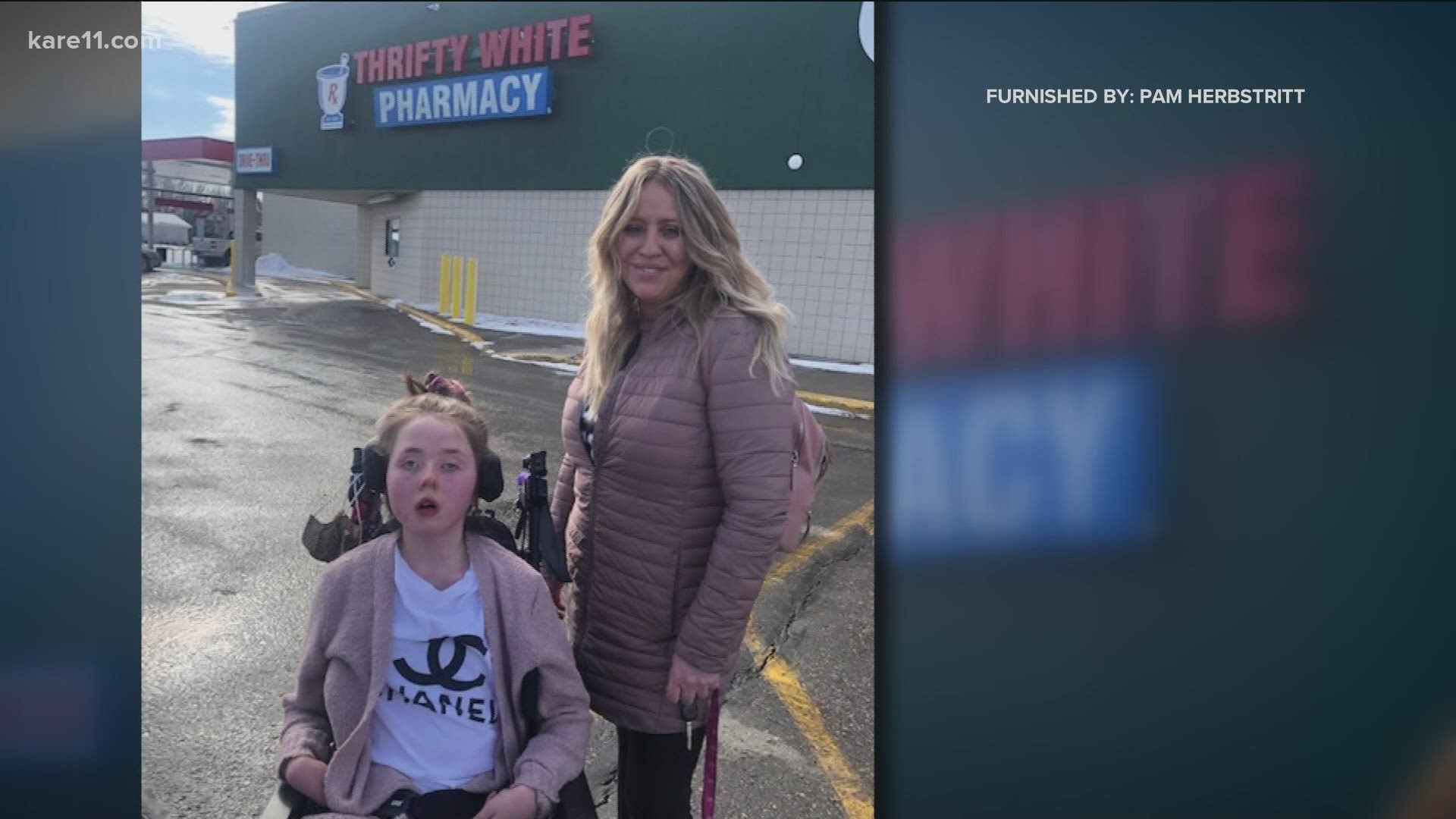MINNEAPOLIS — When Minnesota first revealed the COVID-19 vaccine priority groups, some medically vulnerable residents found themselves left out.
"A sense of panic set in," said Pam Herbstritt of Chaska.
Herbstritt says she logged onto Minnesota's Vaccine Connector to find that her 17-year-old daughter, Amber, didn't qualify for high-risk priority.
This was despite the fact that her daughter suffered from several medical conditions like Spastic Quadriplegia, a severe form of cerebral palsy. It appeared she would have to wait months for a shot.
"Months, to us, could be life or death," Herbstritt said. "She does not have the ability to produce a cough, a very strong one, on her own. If she gets a cold, she ends up being on steroids through a nebulizer. A year and a half ago, pre-COVID, she was in the hospital on a ventilator. I knew that if she were to get COVID, it would possibly kill her."
Herbstritt said Amber's doctor's agreed that she was highly vulnerable to severe COVID, so she and her daughter spent the year completely locked down.
"But we still have to go to doctor's appointments, and with the new variants out there, it's terrifying," Herbstritt said. "I knew that I needed to do something about it and get her one quicker."
After nearly four weeks calling pharmacies across the country, a Thrifty White in North Dakota gave her the answer she'd been praying for.
"They said, 'We would be happy to vaccinate your daughter, and I just broke down crying," Herbstritt said. "It was almost like a miracle at that point."
They were told Amber could make an appointment to get her first dose of the Pfizer vaccine because North Dakota had begun allowing vaccinations for people with two or more high-risk medical conditions regardless of age, and, at the time, Thrifty White didn't have any residency restrictions. Days later the family drove to the pharmacy in Wahpeton and Amber received the shot.
"They were so genuinely empathetic to our situation and they welcomed us," Herbstritt said.
During the trip, the family quickly learned that the pharmacy had grown pretty accustomed to welcoming Minnesotans. So many people have been crossing into North Dakota to get a vaccine that, on Monday, Thrifty White changed it's policy, saying only North Dakota residents could sign up. The only exemptions are for people who have a connection to the state for work, school, medical care or through a secondary residence.
"It felt like a lifeline, our one lifeline. It felt like it was severed," Herbstritt said.
According to Thrifty White, North Dakota officials were concerned that the flood of Minnesotans would throw off it's federal vaccine allocation.
"If someone has an appointment, we're not turning them away," said Jeremy Faulks. "We don't want to cause drama, so if they had an appointment we want to make sure we take care of them and help them out. At the same time, we also want to be respectful of what North Dakota's strategy is. One of the hardest pieces to manage is right now every state kind of has their strategy that they're following."
That's why Pam helped start the Vaccinate the Vulnerable Minnesota Facebook group, which now has more than 1,400 members, who have been reaching out to state officials in an effort to convince them to rethink who receives medical priority.
"Get some doctors involved," Herbstritt said. "They know who their complex patients are. They know the ones who are highest at risk because there's a lot of us being left behind."
It appears the Minnesota Department of Health is listening. On Tuesday, State Health Commissioner Jan Malcolm announced that MDH had issued new vaccine guidance, expanding the high risk eligibility to include Type I Diabetics and "people with rare conditions that put them at higher risk," which will be determined by medical providers.
"We're intending to give some flexibility there for clinicians to work with their patients to make those decisions," Malcolm said.
Though it's not completely clear who will now qualify for the next priority group, Herbstritt said it's a positive sign.
"Absolutely a step in the right direction," she said. "I feel like we are being heard and it's a lot better than where we were."

